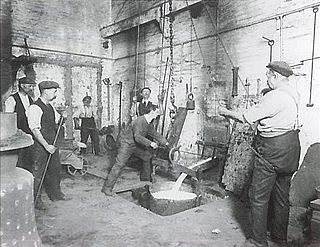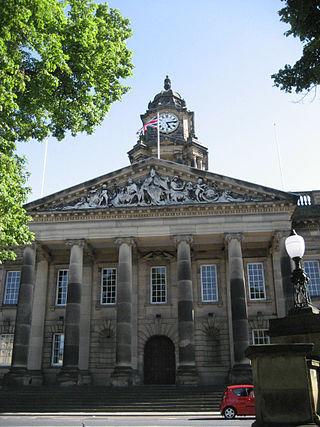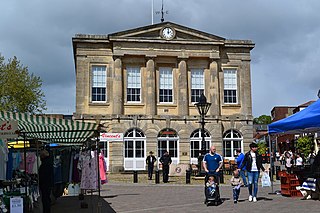
Luton is a town and unitary authority with borough status, in Bedfordshire, England. The 2021 census gives the population of the Borough of Luton as 225,262 and the population of the Luton/Dunstable urban area as 286,450.

Bedfordshire is a ceremonial and historic county in the East of England. It is bordered by Northamptonshire to the north, Cambridgeshire to the north-east, Hertfordshire to the south-east, and Buckinghamshire to the west. The largest settlement is Luton which had a population of 225,262 in 2021.

Bedford is a market town in Bedfordshire, England. At the 2011 Census, the population was 106,940. Bedford is also the county town of Bedfordshire and seat of the Borough of Bedford, a unitary authority that includes a significant rural area.

Gillett & Johnston was a clockmaker and bell foundry based in Croydon, England from 1844 until 1957. Between 1844 and 1950, over 14,000 tower clocks were made at the works. The company's most successful and prominent period of activity as a bellfounder was in the 1920s and 1930s, when it was responsible for supplying many important bells and carillons for sites across Britain and around the world.

Leagrave is a former village and now a suburb of Luton, in the Luton district, in the ceremonial county of Bedfordshire, England, in the northwest of the town. The area is roughly bounded by Vincent Road, Torquay Drive and High Street to the north, Roman Road and Stoneygate Road to the south, the M1 to the west, and Marsh Road and Leagrave Park to the east.

Sutton Coldfield Town Hall is a former hotel and council building in Sutton Coldfield, Birmingham, England. The building is Grade A locally listed.

Luton Borough Council is the local authority of Luton, in the ceremonial county of Bedfordshire, England. Luton is a unitary authority, having the powers of a county and district council combined. It is a member of the East of England Local Government Association.
Luton is a town located in the south of Bedfordshire, England.

Dunstable is a market town and civil parish in Bedfordshire, England, east of the Chiltern Hills, 30 miles north of London. There are several steep chalk escarpments, most noticeable when approaching Dunstable from the north. Dunstable is the fourth largest town in Bedfordshire and along with Houghton Regis forms the westernmost part of the Luton/Dunstable urban area.

The Luton Peace Day Riots occurred over three days from 19 to 21 July 1919. Servicemen angry at the lavish spending for the peace parade held in London on 19 July, following the end of the First World War, protested that the money should be spent on re-integrating soldiers returning from the war.

High Town is an inner area of Luton immediately north of Luton railway station, and a ward of the Borough of Luton, in the ceremonial county of Bedfordshire, England.

Lambeth Town Hall, also known as Brixton Town Hall, is a municipal building at the corner of Brixton Hill and Acre Lane, Brixton, London. The town hall, which is the headquarters of Lambeth London Borough Council, is a Grade II listed building.

Watford Town Hall is a municipal building in Rickmansworth Road, Watford, England. It is a Grade II listed building.

Croydon Town Hall is a council building in Katharine Street, Croydon which serves as the headquarters for Croydon London Borough Council. It is a Grade II listed building.

Burnley Town Hall is a municipal building in Manchester Road, Burnley, Lancashire, England. The town hall, which is the headquarters of Burnley Borough Council, is a Grade II listed building.

Lancaster Town Hall is a municipal building in Dalton Square, Lancaster, Lancashire, England. It was built in 1909 and is a Grade II* listed building.

The Old Town Hall is a municipal building in St Paul's Square in Bedford, Bedfordshire, England. The building, which was the headquarters of Bedford Borough Council from 1892 to 2009, is a Grade II listed building.

Eastbourne Town Hall is a municipal building in Grove Road, Eastbourne, East Sussex, England. The town hall, which is the meeting place of Eastbourne Borough Council, is a Grade II listed building.

Andover Guildhall is a municipal building in the High Street, Andover, Hampshire, England. The guildhall, which was the headquarters of Andover Borough Council, is a Grade II* listed building.




















